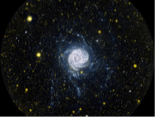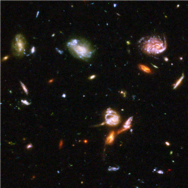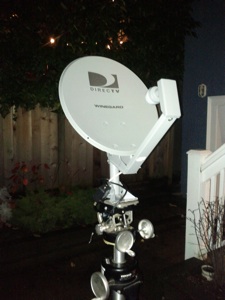BUILD YOUR OWN MICROWAVE TELESCOPE

Hi there! This website contains the following pages:
1) Build - Instructions for how to build a simple microwave telescope
2) Light & Astronomy - Information on the physics behind light and multi-wavelength astronomy
3) Education Resources - Some resources from a physics class I taught to Grade 11’s and 12’s
4) About Me - A bit about me, my contact information, and acknowledgements
The telescope that I’ve made can easily detect, to name a few, radiation from the Sun (even on a cloudy day!), satellites, houses, a microwave, the ground, hot water, trees, and a human body! A larger dish would be needed to detect something like the Moon.
A (simple) description of how it works:
The telescope first gathers emission from a source and focuses the emission onto a low-noise block downconverter (LNB). The LNB first amplifies the signal, then converts the higher signal into a lower one (less loss in the cables). This signal can then be measured by a signal strength meter (measuring volts per meter), or by a voltmeter. The signal strength meter has to be powered by an external power source (in my case 8 AA batteries). This telescope operates in the 11-17 GHz regime, and is technically a “microwave telescope”.
Cat’s Eye Nebula: http://chandra.harvard.edu/photo/2008/catseye/catseye.jpg
Galaxy: http://www.jpl.nasa.gov/spaceimages/details.php?id=PIA10374
CMB Photo: http://upload.wikimedia.org/wikipedia/commons/2/2d/WMAP_2010.png
Eagle Nebula: http://nssdc.gsfc.nasa.gov/photo_gallery/photogallery-astro-nebula.html
Ultra Deep Field: http://upload.wikimedia.org/wikipedia/commons/f/f3/Hubble_Ultra_Deep_Field_part_d.jpg






